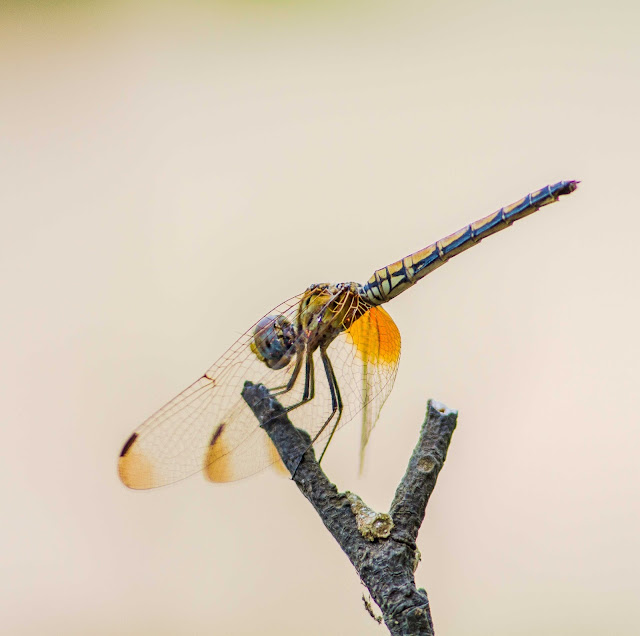Description
The Long Legged Marsh Glider (Neurothemis fulvia) is a species of dragonfly found in India and nearby continents.Long Legged Marsh Glider or Trithemis pallidinervis is a medium sized yellowish brown dragonfly with long legs that resembles more like spider's legs.
In the Male, the face is yellow or pale brown in front and iridescent purple above. The eyes are colored Reddish brown above, brown on sides and bluish grey below. The Thorax is Olivaceous-brown above with a dark brown triangle. On sides, it is bright yellowish brown with three black stripes on each side. Legs are Black in color, long and spidery. The basal half of femora of first pair of legs are bright yellow. The Wings are transparent with reddish venation. The forewings have amber coloured basal markings. The wings have a golden sheen when viewed from certain angle. Wing spot is black with creamy white ends. The Abdomen looks Bright yellow in color with black median and lateral stripes. These stripes are confluent at the end of each abdominal segment to enclose a wedge shaped yellow spot. The male varies in colour from yellow (below) to chocolate brown and is easily distinguished by its long legs and wings that point upwards.
Female resemble the male and wings are often tinted with yellow or reddish brown. The base of abdomen is broadly black. Size: Male: Abdomen: 28-32mm, Hind wing: 30-36mm. Size: Female: Abdomen: 26-28mm, Hind wing: 30-32mm.
Behavior, feeding and habitat
This dragonfly is seen near marshes and weedy ponds. It usually perches on tall aquatic weeds or bare ends of shrubs. The long legs are very clearly noticeable at this time. They are also seen near streams, rivers and good sources of water, especially near rivers flowing through forests. It has been observed from many instances to be not much scared of human beings, hence its easier to photograph them.
It was observed to have stayed for a long time without moving an inch from its perched spot, especially on bare ends of shrubs. It is seen in plenty in the months of October-December, though could be seen at other times, but not as much in count, as seen through October- December.
I am happy to contribute an article on this dragonfly, to Wikipedia which has never been recorded before by anybody in this world. Luckily I am the first person to create and list this dragonfly to the world for reference. I am thankful to my friends Ajith Kamath and Ranganath Bhat for choosing Someshwara as location for birding, where we could witness this beautiful living phenomenon of nature.







No comments:
Post a Comment